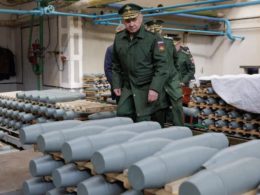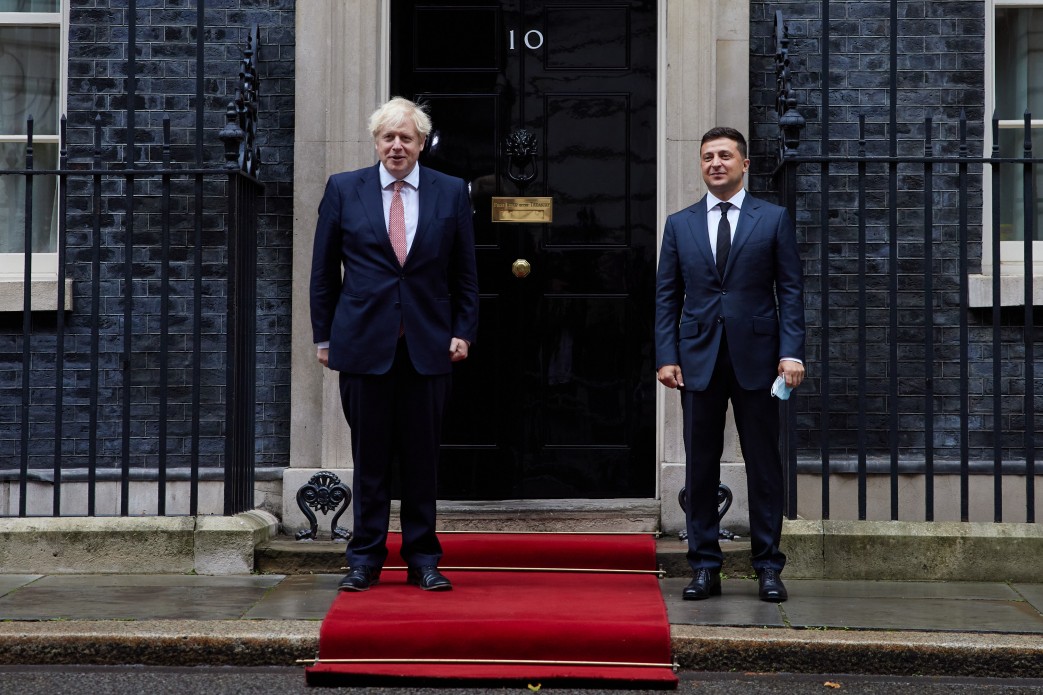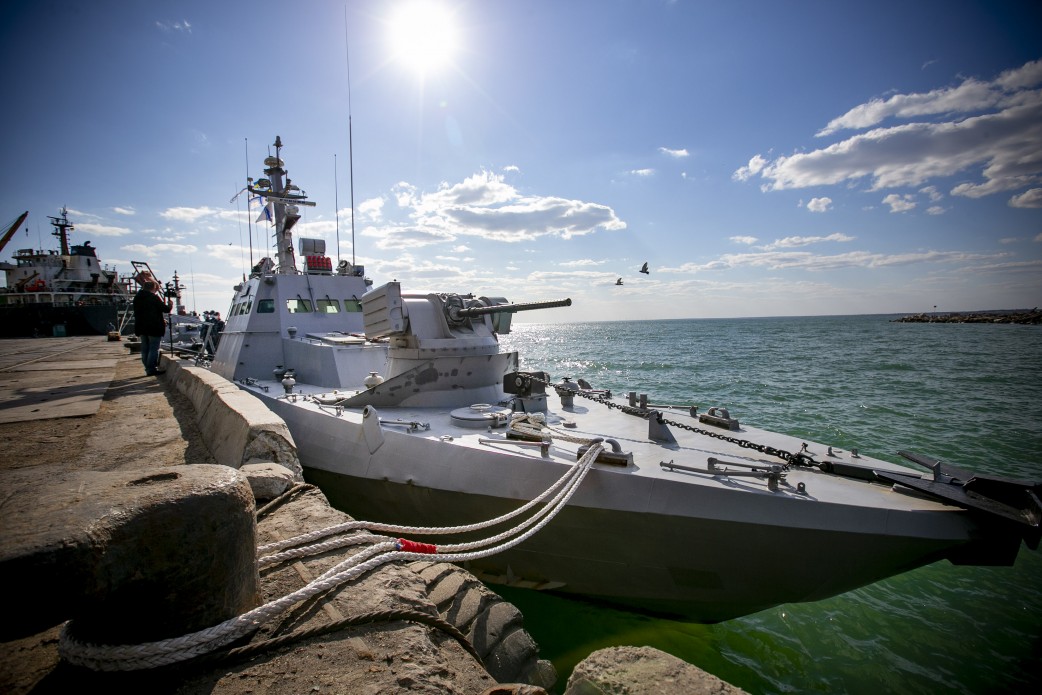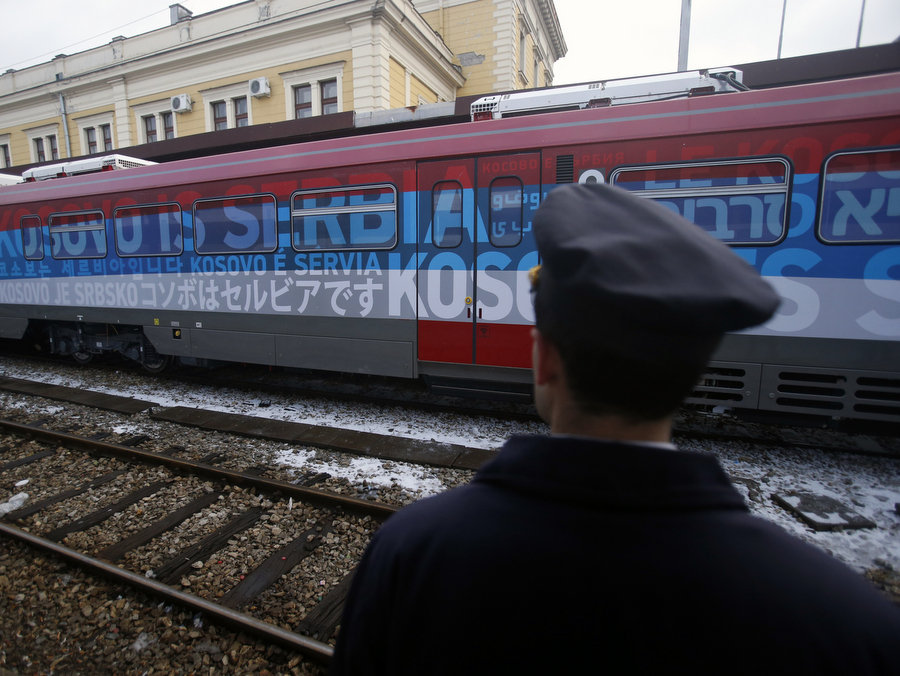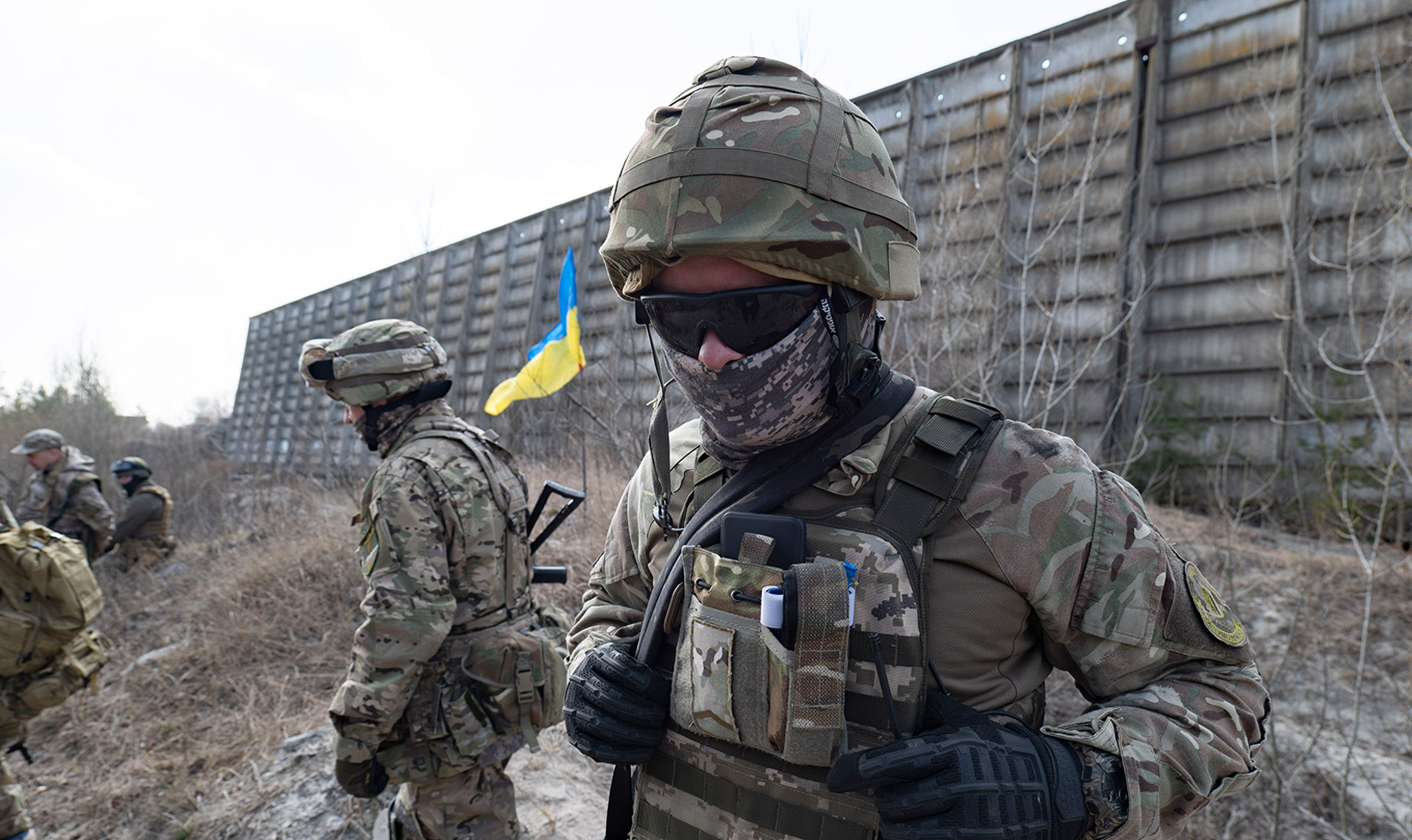
Yevhen Rudenko and Eldar Sarakhman at Ukrainska Pravda reported about the training of volunteers. Euromaidan Press has prepared an abridged translation of the report and provides additional insight into the Territorial Defense.
According to Ukraine’s intelligence services and that of international agencies, the Kremlin is preparing large-scale provocations with potential incursions deeper into Ukrainian territory. NATO’s European Command has raised its threat level amid the Russian military buildup at the Ukraine/Russia border and at the doorsteps of NATO countries abutting Ukraine. The Russians are in fact militarizing as far away as the Arctic.
- Read more: Biden phones Zelenskyy amid Russian troop build-up along Ukrainian borders and escalation in Donbas
Over the last seven years, the Ukrainian army has been brought up to scale to meet NATO standards; the ultimate goal is to join the alliance.
How a brigade of Ukrainian Ground Forces looks today; video by Defense Express:
However, in terms of troop numbers and financing, Russia has an obvious advantage. Without backing by NATO, the Ukrainian army alone has little chance of defending 2,000 kilometers of border with Russia.
This is the major reason behind the creation of the Ukrainian Territorial Defense Forces. In the event the Russian army invades any stretch of Ukrainian territory, battalions of the Territorial Defense will mobilize in that area, creating huge obstacles and posing a threat of significant casualties for the aggressor.

The first units of local defense emerged in 2015 through grassroots initiatives in the north-east regions of Ukraine, where the local population feared an expanded Russian invasion.
Then, in 2016, authorities took steps to organize the Territorial Defense into a unified defense corps. Despite an order by presidential decree, this undertaking has not yet been completed.
At present, the Territorial Defense is part of the Ukrainian Ground Forces, but its specific function is to defend its own local territories.
To formalize its structure and make it eligible for full State funding, a special law needs to be passed. To this end, Bill №4504 has been submitted to Parliament. The bill is based on the experience of territorial defense established by Poland, Estonia, Sweden, and Switzerland. The key points in the bill include territorial distinctions and speedy readiness for live combat. Its motto is: "I live here, I guard my house, the street. People who are members of my unit live next to me. We know the area and our neighbors.”
The law has been criticized by President Zelenskyy for its emphasis on regionalism and its proposed autonomy for the Territorial Defense. The president has promised to submit an alternative bill, but as of publication has not done so. Thus, in legal terms, the role of the Territorial Defense is still not ratified.

The Kyiv 130th Solomianskyi Battalion training zone is located next to the abandoned power plant №6 — an industrial wasteland dotted with dunes that are ideal for mock combat maneuvers. See more in the abridged translation of the report by Ukrainska Pravda.
Partisans for Putin

Mariana Zhahlo, a teacher of physics and astronomy, joined the 130th Solomianskyi Battalion in 2020. In addition to her work as a schoolteacher and family responsibilities, four times a month Zhahlo trains in tactical skills and military weapons. Dedicated to her constitutional duty, every weekend this mother of three children gears up with 20 kilograms of live ammunition to practice combat shooting at the Kyiv department of the Wild Field sniper school. She says:
“My husband is a soldier, he was happy that I went to serve. Only my daughters looked at me strangely.”


“Did everyone read the lecture materials?” A military officer with combat experience jibes the volunteers. He knows that what will be required of them can not be learned from lectures.
The soldiers spend two hours in rigorous drilling. Ironically, they hear carefree chirping of birds in the industrial outskirts of Kyiv.

Three extreme sport motorcyclists race onto the dunes whipping up sand all around them. But when they spot the soldiers in full gear, they take off into the dust.

The officer issues his command:
- We squat a little, like on skis! You should be comfortable so that nothing hurts. Lower, lower! Knees forward! Butts back! Who went skiing this year?
- I like sleighing- one of the soldiers quips as the others break out in laughter.
Denys Semyroh-Orlyk has been in territorial defense for two years. Still working as a professional architect, he is now the commander of a rifle company. Together with his fellow volunteers, Semyroh-Orlyk will complete basic combat training: orienteering and navigation, defense positioning, rifle marksmanship, advanced weapons, survival skills, and first aid. If not as lengthy, the training is no less strenuous than that of an infantry boot camp.

“As the combrieg [commander of the brigade] says, our task is not to die in the first battle. Then the enemy will deal with professional soldiers,” says Semyroh-Orlyk.
Outfitted in helmet and pixelated uniform, wiping sweat from his forehead, Semyhor-Orlyk calls himself “a former cosmopolitan, for whom there was one planet without fences.” But life put everything and everyone in their place.
“The Maidan, the war, they awakened Ukrainians… people like me,” he says. “Now we are actually restoring the old Cossack tradition, when registered Cossacks worked their farmland, but when the threat came, they took up arms and fought.”

Semyroh-Orlyk goes on to describe the significance of these reserve forces:
“If the Russian Federation wants to hit us from a direction where there is not a great density of our regular army as there is on the Donbas front, a full resistance should mobilize across the whole country. The aggressor must know that there will be a hostile environment all around them. Territorial Defense will resist at routes, bridges and other important points of communications. The enemy must know that in the rear he will have our combat-ready units, which might come out in civilian clothes. They will be very difficult to identify … Every person who is not indifferent, must undergo military training, because we live as on a volcano. If there had been a Territorial Defense in Luhansk and Donetsk in 2014, if our patriotic guys had not come out there with flags in a peaceful protest, but conducted real resistance, there would have been no proxy war in Donbas.”

The order is given: “Move forward, arrange a temporary checkpoint. As always, you’ll have nothing. So grab everything you have under your feet. Improvise.”
A key exercise for the soldiers is to build checkpoints at a moment’s notice. These are assembled from logs, branches, twigs, and any other available resource, using nails and screws, insulating tape, and even household tape. They must go up as quickly as possible and may even be temporary.
“Why temporary? We must place it where it is not expected. Time is running out! In an hour you should have a checkpoint. Time! Time! Time!”

Something is rustling in the bushes by the entrance to the protected area. Hacking with a sapper's ax, the Elk hides from an enemy. Originally a nickname because of his height, “Elk” has become a nom de guerre for Oleksiy – an engineer by profession.
Elk has been trained in various military specialties, and handles weapons with confidence:
“Actually, I'm a sapper. But now I'm acting as a sniper. I shoot well.”
Oleksiy carries an American 308-caliber rifle, which he bought himself for over one thousand dollars.

Another soldier, Dmytro, moved to Kyiv from Donetsk one year-and-a half after the war began. In his hometown, he worked in a children's clinic and opened a fitness club. He took part in all the pro-Ukrainian rallies in Donetsk, but when the Ukrainian flags disappeared in the city, he stood back and only watched what was happening.

In the Territorial Defense, he earned the nickname “Separ” – shortened for separatist.
- We should take care of Separ, we have only one here - tease his buddies.
- But soon there will be more. I’m working at it, I’m recruiting - rebuts Separ.
One of the reasons Dmytro joined the Kyiv Territorial Defense Battalion is shame.
“It was shameful that I did not take an active part in the defense of Donetsk and Ukraine in general. Truly speaking, I slept badly because of this.” He has learned a lot since then: “Every hour of such training is proportional to one minute of survival in the real battle.”

Anti-tank hedgehogs, firing points, and minefields are part of the layout of the checkpoint, which gets done within an hour. It is now a simulator for this part of training.


- Do you have a barrier? - The officer demands. - Is there a Stop sign on it?
The soldier answers:
- Yes. Here and further on. Over here we have a patch of thorns. The exit to the other road has been blocked and mined. Here and there we’ve planted ‘secrets’ -- a sniper and a machine gunner.
A matte black Toyota FJ Cruiser stops at the checkpoint. The mock inspection of documents and the vehicle begins.

The training officer asks a soldier: “Now what do you do?” He answers “The senior officer must take control then demand papers from the driver.”
The trainer then throws out a barrage of challenges:
- What do you have to ask when you check the documents?
- Is he carrying forbidden items?
- If he says: "No" what's next?
- Order him to open the trunk!
- Don’t get too close. Do nothing yourself. Ask him to open it. Make sure you search him, he may have a grenade under his satchel.
- “On your knees, hands behind your head!” - orders a soldier, spotting a weapon in the driver’s pocket.

The drill ends late in the afternoon. Against the background of the sham checkpoint, tired but gratified, the battalion volunteers look especially real. Real too is a Ukrainian flag hoisted on a sandy hill. The war is also real, despite the fact that the front is about 700 kilometers away. Most of all, the war feels real as you look at ordinary Kyivans in military uniform who have voluntarily signed up to fight for their land. They may be called upon to do exactly that.



